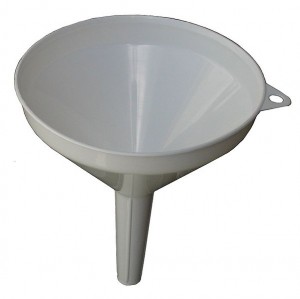My first job was on a bond trading floor at a Wall Street investment bank. It’s impossible to overstate the impact of innovations in computing and telecommunications on the financial markets in the 1980s.
Within a decade finance was transformed from a clubby, old-boys’ network to a 24-hour global trading system.
With that revolutionary shift a new currency of success emerged: the ability to gather, interpret, and react to new information in fractions of a second – real time.
Today, no financial professional would ever consider making a transaction without understanding where the markets are trading right now and what’s happening in the news at that precise moment.
It has taken a quarter century. But in fields like marketing and public relations, the impact of the real-time revolution in finance is finally beginning to be viable for any organization.
Real-time lead generation
Here is just one aspect – a data driven real-time website with an email component – of what the instant environment offers:
As a buyer visits your Web site and registers for a webinar, an alert is triggered on the salesperson’s real-time dashboard, providing details about the buyer based on the page that person is visiting. The alert notes that the person downloaded a white paper a few days ago.
In fact, the alert is flagged as high priority because that combination of actions (white paper download plus webinar registration) is highly indicative of a propensity to buy.
The alert automatically pulls up information on the buyer’s company. Are they already a client? Have others from this company visited the site before? What do third-party information providers say about the company? News stories from Dow Jones or Bloomberg appear along with a company snapshot from an information supplier like Hoovers.
Even the buyer’s LinkedIn and Twitter profiles appear. And all of this happens in real time.
The system then automatically creates an email that can either be sent automatically, or reviewed by the salesperson first and then sent right away.
In the emerging real-time business environment, where public discourse is no longer dictated by the mass media, size is no longer a decisive advantage.
Speed and agility win.
But you need an infrastructure, much like a Wall Street bond trader, to play in this new world.
Let’s look at a B2B example to see how this works. This is an example I’ve written about before on my own blog, but I want to delve into it deeper than I ever have before for the MarketingSherpa audience, and give some actionable advice you can use to improve your email marketing, and marketing in general.
Imagine a huge company announces it is to acquire one of your competitors. It hit the wires five minutes ago.
What would you do right now?
Not tomorrow. Now.
How about writing a blog post about it in real-time? And then how about sending an email right away to all of the contacts in your database who you know are customers of your competitor?
That’s what Joe Payne, CEO of Eloqua did when Oracle announced the acquisition of Market2Lead, a company that is also in the marketing automation arena.
I’m on the Eloqua advisory board and was having dinner with Joe, other advisory board members, and the Eloqua management team on May 24 in San Francisco when this went down.
Joe checked his BlackBerry and saw that the announcement had just been made.
The Oracle announcement contained only a North Korea style one-paragraph announcement. So Joe realized that there was a tremendous opportunity RIGHT NOW to write a blog post and define what the announcement meant.
In his post, “Oracle Joins The Party,” published a few hours later, Joe said (in part): “I expect Oracle’s entry to make a major difference in the attention paid to this sector. It’s going to open marketers’ eyes, and, as a result, expand the market. This is exactly the type of movement this industry needs. You see, the potential market for lead management systems is less than 10 percent penetrated.”
Eloqua’s CEO now owns the soundbite!
Can you see what Joe did? Oracle announces an acquisition but provides almost no details. The media is hungry for something to say and someone to quote. Bingo, a Google search pops up Joe’s post and now reporters, analysts, and bloggers have an authority to cite in their stories.
As a result of this real-time market commentary, Eloqua became an important part of the resulting stories in InfoWorld, Customer Experience Matrix, PC World, Customer Think, etc.
Now, when people want to learn about this transaction, they find Eloqua in the discussion. If you’re an analyst coving the market category or an existing customer of Market2Lead or are evaluating marketing automation platforms, Eloqua becomes someone you should consider.
Now is when the email kicks in. The marketing team at Eloqua queried their prospect database for any company in the sales cycle that was either an existing or potential customer of Market2Lead. Each of those people then received an email which was sent from the email address of their sales rep, pointing out the real-time blog post that Eloqua’s CEO Joe Payne wrote. These emails were customized by the sales rep:
Subject: Transition program
Hi Jim ,
I wanted to check in because I see you are using Market2Lead. It’s been quite an exciting week for Market2Lead and Oracle with the acquisition announcement. No doubt Oracle’s arrival at the party will bring increased attention to the sector. You see, as an early adopter of Marketing Automation, you’re one of the less than 10% of organizations who are recognizing the value it brings to your business.
Not surprisingly though, we’ve had a lot of calls over the last few days from many nervous clients as Oracle only acquired Market2Lead’s Intellectual Property (IP), not their customer contracts. As the leader in marketing automation, Eloqua is interested in helping you transition to a platform that will allow you to continue to do great marketing. We are offering Market2Lead clients a transition program consisting of a free SmartStart onboarding program and a six-month, money back guarantee on all subscription fees.
The Eloqua team is committed to helping you make a smooth transition.
Let me know when you have 10 mins to chat. You’re not alone!
Best,
Sales Rep Name Here
Eloqua
Amazingly, this Eloqua email was often the first that the customers of Market2Lead were hearing that their vendor had been acquired. Again, Eloqua owned the sound bite because they were first.
Many of those sales prospects then contacted their sales rep to learn more and soon deals started to close. The first signed customer as a result of this effort was Red Hat, a Market2Lead customer who chose to switch to Eloqua resulting in a $250,000 deal.
I’m constantly amazed at what real-time communications can do. Had Eloqua waited several hours to act, the moment would have been lost.
An immensely powerful competitive advantage flows to organizations with people who understand the power of real-time information.
Here are some things you can do right now to get started:
The most important thing is to develop a real-time mindset – an attitude that recognizes the importance of speed. It is an approach to business (and to life) that emphasizes moving quickly when the time is right. Developing a real-time mind-set is not an either/or proposition. I’m not saying that you should abandon your current business-planning process. Nor do I advocate allowing your team to run off barking at every car that drives by. Focus and collaboration are essential. The smart answer is to adopt a both/and approach, covering the spectrum from thorough to nimble. Recognize when you need to throw the playbook aside, and develop the capacity to react quickly.
The first priority to implement your mindset is to listen to bloggers, analysts, journalists, and others who talk frequently about you and your business. To find these voices, start by checking the search engines (Google, Yahoo!, Bing, and so on) for all the relevant keywords and phrases you can think of: your company, customers, competitors, prospects, product categories, buzzwords—whatever you can think of. Use specialized blog search engines like Google Blog Search, IceRocket, and Technorati to find bloggers interested in subjects related to your business.
Develop guidelines that permit people to communicate at speed. Develop an effective code of real-time communications and proactively embed it throughout your organization. Train it, demonstrate it, discuss it, and review it until this becomes second nature to everyone. Have your people internalize it as deeply as the instincts that tell them when it’s safe to turn left at a traffic light (or right if they’re Brits). This is fully possible. IBM’s code is called Social Computing Guidelines. The IBM guidelines include all manner of helpful instructions. Be who you are; be thoughtful about how you present yourself in online social networks; respect copyright and fair use laws; protect confidential and proprietary information; add value; don’t pick fights; and don’t forget your day job. But the single most important guideline in the IBM document is this: Speak in the first-person singular. In fact, I think that speaking in the first-person singular is essential to understanding what we’re really talking about here.
To support real-time business, you need technology infrastructure every bit as sophisticated as a financial trading floor. When well-integrated into an appropriate technology backbone, real-time data work together to feed the dashboard that your marketers, PR professionals, salespeople, and executives use every day.
Fortunately for organizations like Eloqua that operate in real-time, not many people are using these technique yet.
When everyone else is pitching the media using traditional methods and sending plodding emails pitching product when it suits them, why not frame the discussion with your own well-placed commentary and alert prospects by email.
Editor’s Note: David Meerman Scott will be the featured keynote speaker, sponsored by ExactTarget, at the MarketingSherpa Email Summit 2011 + Awards & Expo in Las Vegas, January 24-26, and all attendees will receive a copy of his latest book, Real-Time Marketing & PR.
Related Resources
Email Marketing Manager: Look past campaigns to boost your career
B2B Marketing: Marketing automation helps with lead nurturing and management
Email Summit ’11: Tackling the Top Email Challenges with All-New Research, Case Studies and Training
 Looking at the top of the funnel
Looking at the top of the funnel









